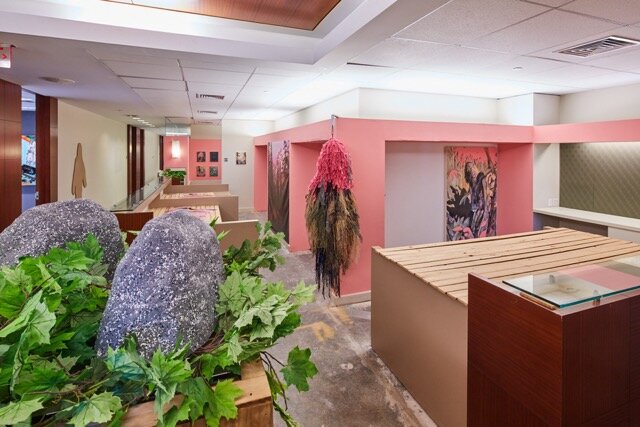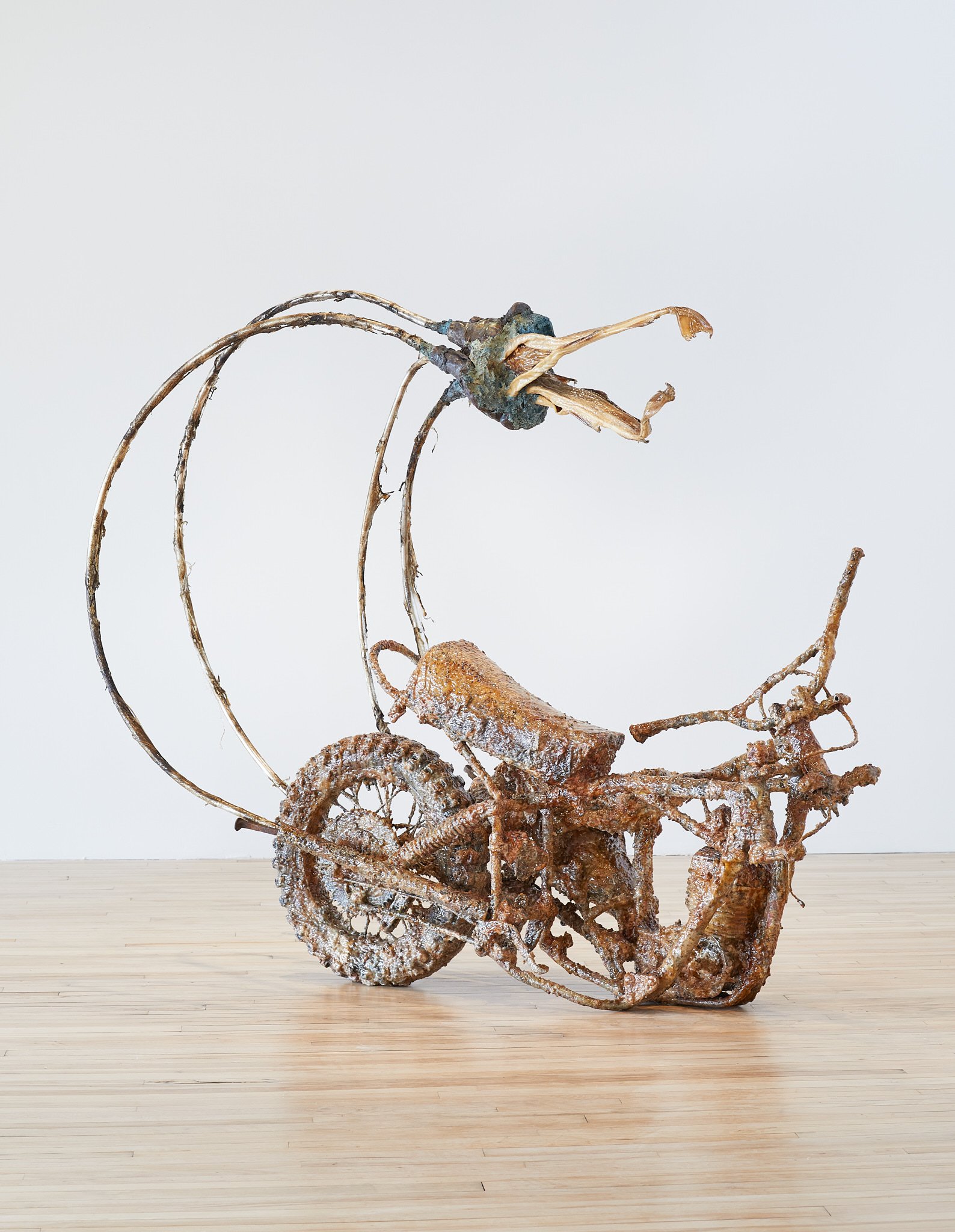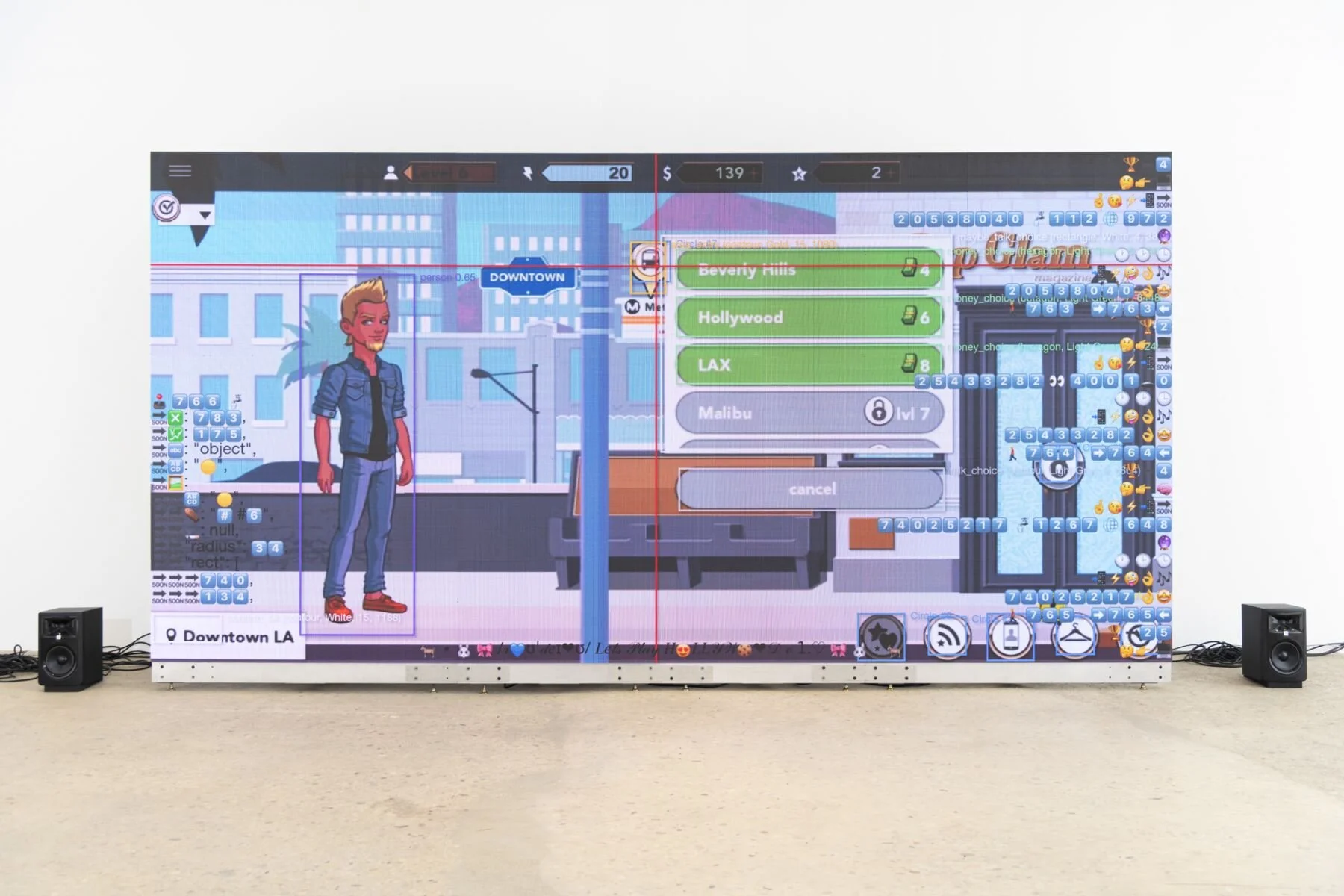A Break with the Past: SPRING/BREAK 2018
Installation view of Cupid Ojala: “C U Next Tuesday”, curated by Christopher Stout. Image courtesy of Samuel Sachs Morgan Photography.
Now in its second year at Chashama’s space in the former Condé Nast building in Times Square, SPRING/BREAK Art Show continues its mission to be “New York City’s curator-driven art fair” to debatable degrees of success. Despite its announced theme of “stranger comes to town,” the variety of work on view makes any attempt at unification seem laughable. Some curators played it straight, showing obvious work predictably based on identity, immigration, and the degenerate state of American politics. Other booths seemed to ignore the theme completely and provided the thinnest justification, if any at all, for their inclusion. As in its previous iterations, the fair is fractured and fragmented and sometimes bizarre, with a sensibility like that of a crowded shopping mall, with eye-catching artwork occupying brightly-colored booths that compete with each other for attention and, of course, sales. To put it another way: It looks like an art fair, more so than it had in previous years. This iteration has seen SPRING/BREAK finally break away from whatever indie cred it had left and join the ranks of the major commercial fairs, with many of its offerings organized by galleries and not, despite its slogan, by independent curators.
Installation view of Jeanette Hayes, J fast, J furious. Image courtesy of Castor Gallery.
Many curators and galleries presented solo exhibitions in their spaces this year. Christopher Stout’s Art During the Occupation Gallery used its space — a bright blue curved wall — as an extension of the exhibition currently at the gallery’s main space in Bushwick: C U Next Tuesday by Cupid Ojala. Castor Gallery devoted a booth to their internet-infamous appropriation artist Jeanette Hayes and a trio of her large-scale paintings depicting anime girls on motorcycles. Hayes has been called out online by anime fans for purportedly plagiarizing the work of Japanese artists, to such an extent that her last show at Castor featured a six-hour long video of the artist reading her hate mail. Hayes’s motorcycle paintings resemble her previous painterly work, pastiches of American and Japanese pop culture that are just clumsy enough to not seem entirely cynical. Silas and Andre von Morisse curated an instance of Brett Wallace’s ongoing project, Amazing Industries, an Amazon-like startup that, like many such companies, may or may not actually provide any useful products or services aside from its impressive-looking corporate branding: The entire repurposed office space is emblazoned with the sleek Amazing logo. In a corner of the space a lone worker performs digital drudgework on Amazon’s “Mechanical Turk” distributed micro-labor platform. Behind him is a wall of photos taken by other such workers of their workspaces — desks and laptops — solicited by Wallace through the platform itself, closing Amazon’s circle of digital labor (or exploitation).
Installation view of Amazing Industries by Brett Wallace. Image courtesy of the artist and Silas von Morisse Gallery
Many, if not most, of the booths were painted in bright colors, to the point that anything decorated in the traditional white cube style actually stood out. Rituals of Otherness, curated by Alexandra Fanning, features video works by Kawita Vatanajankur of the artist performing various tasks in a manner both mundane and bizarre. Each screen is encased in a white wooden box, providing a sense of objecthood for each piece as well as standing out against the booth’s vibrant walls. The space surrounding Guy Nelson’s cryptozoological paintings has been painted a strange shade of magenta, a color used elsewhere in his work, including in a giant ghillie-suit that would seem all but useless for any real camouflage. Some offerings weren’t confined to booths: Andrew Erdos’s large-scale glass sculptures — resembling icebergs lit from within — sit by a window in a large room with light from Times Square filtering through them.
Installation view of Kawita Vatanajyankur: Rituals of Otherness. Image courtesy of Alexandra Fanning.
While many spaces were dedicated to solo shows, there were some commendable group efforts. The Untitled Space’s effort, (Hotel) XX, curated by Indira Cesarine, spills out of its booth and titular hotel room onto the desks in the hallway outside. Featuring work of varying degrees of eroticism by two dozen women artists, Hotel looks like microcosm of the fair itself: Busy, random, and supposedly united by a theme. The curation here is more thematic than that of the fair overall, and the works play nicely with each other while maintaining a sense of individuality. Alexandra Rubinstein’s muted oil paintings of vintage porn scenes share wall space with Jessica Lichtenstein’s $24,000 plexiglass box of saucy anime figurines, yet both seem to belong there.
Installation view of (Hotel) XX, curated by Indira Cesarine. Image courtesy of The Untitled Space.
Compared to previous years, SPRING/BREAK 2018 looks to be gallery-driven rather than curator-driven. While galleries used to remain anonymous, hiding behind the names of their chosen curators, many booths this year are overtly commercial. This doesn’t make the work filling the walls at 4 Times Square any less significant: The majority of the art world in America is commercially-oriented, after all. Given that reality, Spring/Break used to be an experimental platform, a salon des refusées for artists and curators who weren’t showing work that would sell at the major commercial fairs; now that it has become a commercial fair itself, perhaps the art world is in need of a salon des refusées for the former salon des refusées.
Installation view of Guy Nelson: There goes the Neighborhood. Image courtesy of Samuel Morgan Photography.
















